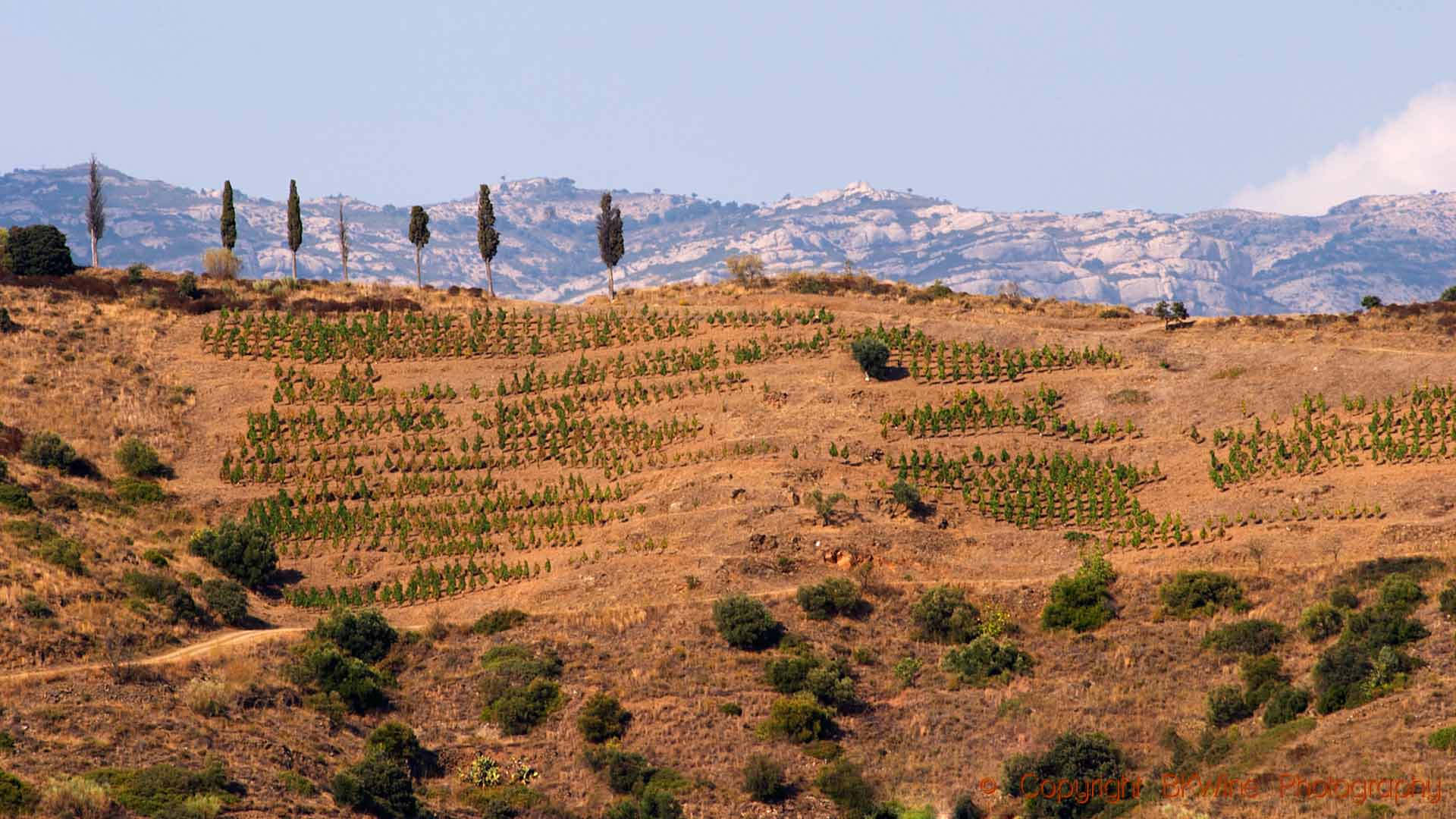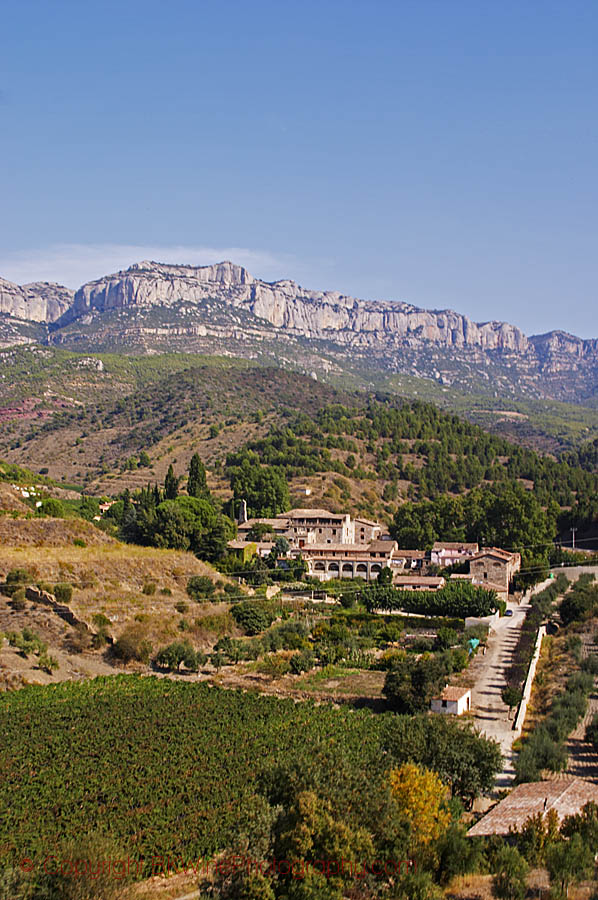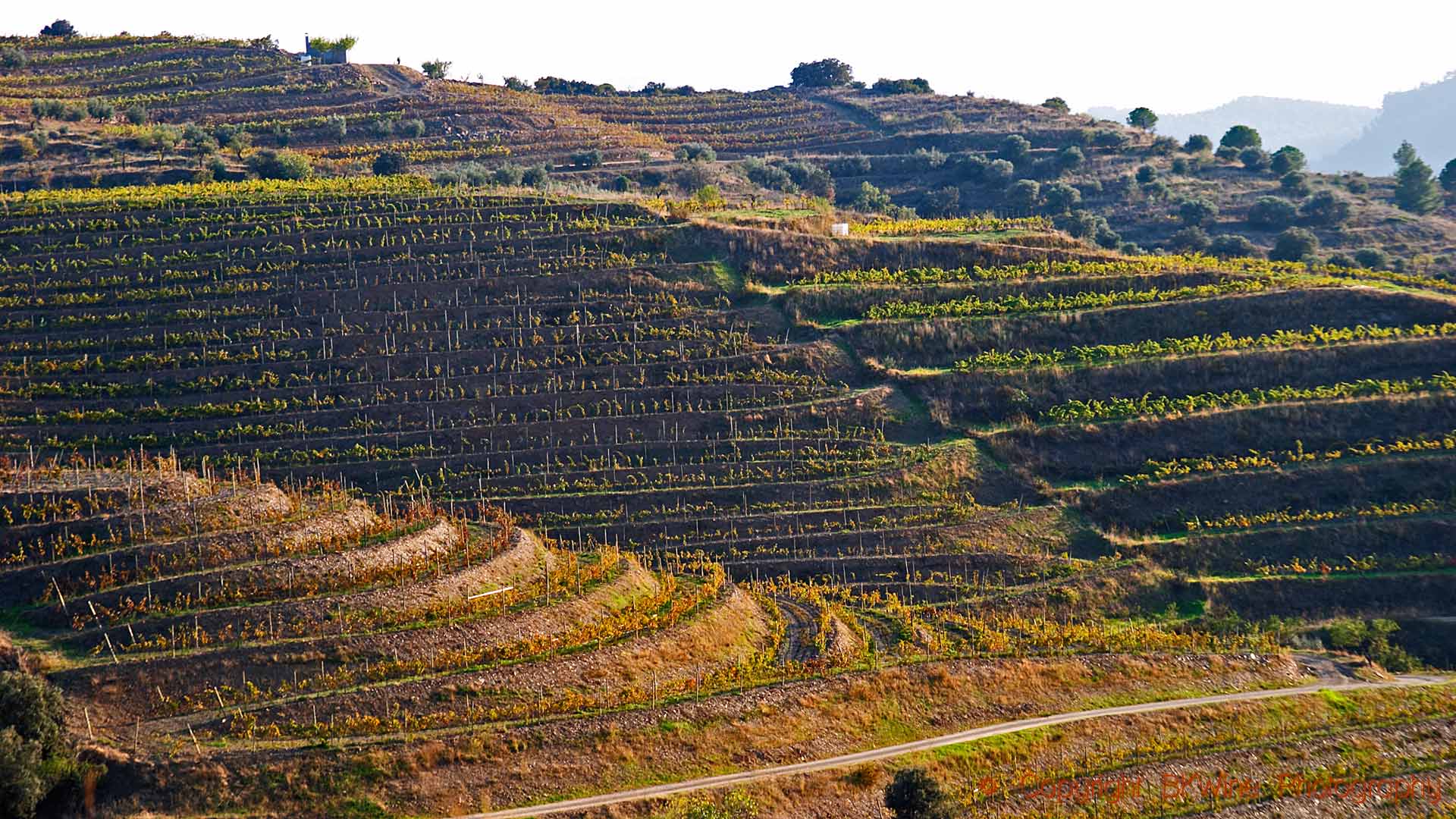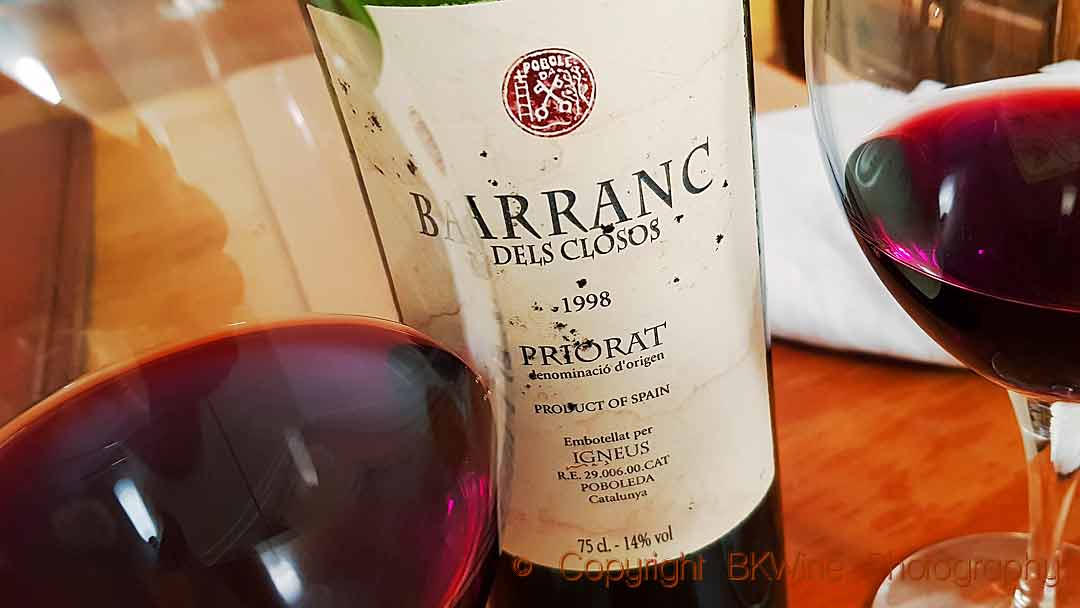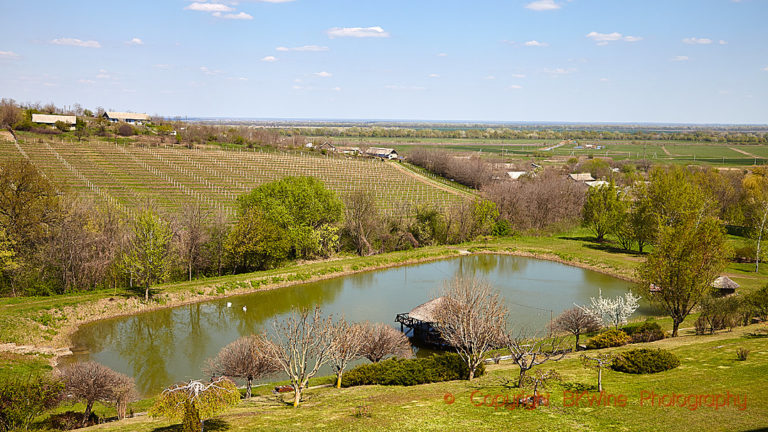How do wine regions become internationally famous? Some, of course, have the advantage of having been known and appreciated for centuries, such as Bordeaux and Burgundy. It may seem impossible that other wine regions would reach the same standing. But it happens. A good example is Priorat in Spanish Catalonia. It languished for many years and almost disappeared. Then in the 1990s something happened that skyrocketed Priorat to fame. A wine from 1998 brought the memories back.
The wine in my glass was served blind, just before dinner arrived (and later enjoyed with dinner, of coruse). I tasted dark berries and some spices; the wine was powerful, fresh and lively. My guess was a 2016, maybe from the Rhône Valley. It turned out to be a Priorat from 1998. I wasn’t disheartened; more amazed that the wine felt so young. After all, the grape selection is similar.
This article was originally published in a shorter version on Forbes.com.
Priorat in Catalonia in northern Spain has an excellent reputation in the international wine world. It is the only Spanish wine region, apart from Rioja, to have the superior DOCa, Denominación de Origen Calificada, in Catalan DOQ (for qualificada). Some Priorat wines have extremely sought after, and the prices are high even though it varies a lot between producers.
It is called Priorat in Catalan. If you speak Castilian Spanish it is Priorato. To reach it you drive south from Barcelona. It is not really far, but the last part of the road is narrow and winding up the mountains so you should count on a two hours’ drive.
Priorat managed to reach the top in just 30 years thanks to the entrepreneurial spirit of a few producers. They did not create a new wine district. They changed something that already existed.
Priorat is tucked away in the mountains of the Tarragona region, about 100 kilometres southwest of Barcelona. The name comes from the monastery Priorat de Scala Dei (The Priory of the Ladder of God), built in the 12th century. It is said that a shepherd boy saw an angel descending from a heavenly ladder right here and therefore the monks built a monastery on the spot. The monks began to grow wine. They made robust, dark and, it is said, rather austere wines.
In the 19th century, the wine estate called Cellars de Scala Dei was founded and had some success internationally with its wines. But the wine louse (phylloxera) at the end of the 19th century forced the owners to give up. (Read more on how Europe’s wine industry was saved from phylloxera by … Texas.) It was not until 1973 that work on the estate was resumed. At that time there were only a few wine producers left in Priorat. The wines did not attract much attention. It was known – if at all – as the place where dark and rustic religious wines were produced. But in the late 1980s, things started to happen in the small town of Gratallops, now a hub of sorts in Priorat.
A group of enthusiastic growers with ambitions decided to show what you can do in Priorat. They knew there was potential here. There were ten of them. Some of them had already been in Priorat for a few years. They decided to work together in a kind of cooperative way. The aim was to make high-quality wines. They would call their wines “Clos” something, to distinguish them from the traditional Priorat wines.
They restored old terraced vineyards, built by the monks many hundreds of years ago. They planted French grape varieties such as cabernet sauvignon, merlot and syrah. They blended them with garnacha from old vines and kept the yield down. Long and warm extraction and a large proportion of new oak gave additional concentration. The wines were rich and powerful, often with alcohol levels up to 15% and a hefty dose of tannins and vanilla.
These characteristics appealed to many wine consumers. After a few years, the wine world was taking a massive interest in Priorat.
Among the pioneers were the soon-to-be-world celebrity Álvaro Palacios with Clos Dofi and Clos l’Ermita, Rene Barbier with Clos Mogador, Daphne Glorian with Clos Erasmus, José Luis Pérez with Clos Martinet and Carles Pastrana with Clos de l’Obac. They are all still around, although the cooperative ideas died out rather quickly and some of them dropped the “clos” (Clos Dofi is now Finca Dofi, Clos l’Ermita only l’Ermita, Clos Martinet is Mas Martinet). And many new have arrived.
Today, 109 wineries in Priorat make their own wine. There are also around 500 growers who mostly sell their grapes to cooperatives or bigger estates. The total area is just over 2000 hectares.
The landscape is striking. The vines grow mainly on difficult-to-work slopes of grey and black slate, a soil called llicorella. The slopes are often steep; the gradient can reach 60%. Terraces have been built in places where the slopes are steep, sometimes with no more than two rows of vines per terrace. It is expensive to produce wine here because of the difficulties to mechanize.
When driving up to Priorat one can see that it is an old agricultural region. On the steep slopes that are now mainly covered in shrubs there are plenty of traces of old terraces, no longer tended to, but that once, a long time ago, were built to grow something. Probably vines. So there is room for expansion if Priorat’s success continues.
The summers are hot with often 35 degrees C and more. Winters are cold, and temperatures can go below zero. In January this year (2021), there was half a meter of snow. The altitude of the vineyards varies from 100 meters above sea level up to 750 meters. The harvest is long, from mid-September until the beginning of November.
The most cultivated grapes are garnacha (garnatxa in Catalan) and carinyena (carignan, or mazuelo in the rest of Spain where Cariñena is the name of an appellation), cabernet sauvignon, syrah and merlot. The rare white Priorat wines are made on only 130 hectares. The grapes are mainly garnacha blanca and macabeu.
The wines of Priorat are still powerful, compact and dense, but these days the producers tend to use a little bit less new oak. The wines age well, just like my 1998 above. The wine, by the way, was a Barranc dels Closos 1998 from the excellent producer Mas Igneus.
Now Priorat is entering a new chapter with a classification of the land that was introduced in 2019. The focus is the importance of origin. “Vines de Vila”, village wines, come from one of the 12 Priorat villages. Some of the famous ones are Gratallops, Porrera, Falset, Escaladei, Torroja and Solanes del Molar. To make a village wine, as opposed to just a DOQ (DOCa) Priorat, you have to follow more stringent rules.
“Vin de Paratge” is from a smaller area within a village with stricter rules as to yield, age of the vines, ageing of the wine etc. “Vinya Classificada” is a single vineyard with an exceptional terroir. “Gran vinya classificada” is the highest level and also a single vineyard. Yields are restricted to 3000 kg/hectares, which is very little, and 80 % of the vines must be at least 35 years old.
The impact of this new classification is yet to be seen.
Some Priorat growers to look for:
- Gran Clos,
- Mas Igneus,
- Clos Figueras,
- Mas Doix,
- Celler Vall Lach,
- Buil et Giné,
- Mas d’en Gil,
- Clos i Terrasses (Daphne Glorian),
- Clos Mogador,
- Mas Martinet
This article was originally published in a shorter version on Forbes.com.
Travel
Maybe the best place to discover the magnificent wines of Priorat is on a wine tour to Catalonia with BKWine.
Travel to the world’s wine regions with the wine experts and the wine travel specialist.
Wine tours that give you insight. BKWine wine tours.


